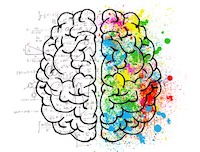Today, January 4, is World Hypnosis Day. If you’re like most people, all you know about hypnosis is what you’ve seen on TV or in movies, and while entertaining, that’s mostly wrong. You may have even seen a live hypnosis show, and while there will certainly be real hypnosis being done, most of what you’re going to notice is showmanship and entertainment.
Actual hypnosis has been used to remove fears and phobias, to heal trauma, and increase confidence or happiness. It’s provided pain management, even during dental work or surgery. It’s been used to change behaviours, to improve sports performance, and to help people quit smoking and other addictions.
It’s also a set of foundational skills that underpins much of what we do in the coaching world, even though we almost never discuss it in those terms.
So what is hypnosis, really?
First, it’s a normal and natural state. You are in and out of a hypnotic trance all day long, and this is a good thing.
- If you’ve been driving down the highway and you get to your destination faster than you expected and you don’t really remember the whole trip, you were in trance. (Time dilation is a common side effect of trance)
- If you’re reading a good book or watching a movie and you get emotional in a sad scene or your heart starts racing in an action scene then you’re in trance. If you hadn’t been, you wouldn’t have felt those feelings.
- If you’re in a state of “flow” or are “in the zone” and are getting an enormous amount of work done in a short time, you’re in trance.
- Generally, any time you find yourself operating on “autopilot”, you’re in trance.
At a physical level, a hypnotic state uses different nodes in the brain and operates at different brainwave frequencies. We are physically using the brain in a different way than when we’re not in trance.
Ultimately, hypnosis is a form of communication. It allows us to talk to the unconscious mind, and when the conditions are right, to give instructions to that unconscious mind.
You may find that concerning, the thought that people might be able to leave instructions in your mind. There is some good news here though - there’s a part of your mind called the critical faculty whose primary purpose is to intercept instructions that would be bad for you and not let them through. You cannot be made to do anything that violates your core beliefs and you won’t accept instructions from people you don’t already trust.
Who is using hypnosis?
Well, everyone. You are hypnotizing the people around you, even if you aren’t aware of it or don’t have any training, and they are hypnotizing you. We all affect those around us, all the time. The only way to avoid that would be to avoid all contact with other humans.
What’s different about a trained hypnotist is that we’re aware of what we’re doing; we’re doing it deliberately and consciously.
We can trace the use of hypnosis back four thousand years to the Egyptian sleep temples, even though it’s only recently, with the rise of the field of neuroscience, that we’ve begun to understand how any of it works.
Why is it relevant to people in the Agile space?
Many of the things that we do in Agile are already leveraging hypnotic techniques, even though we don’t call it that. Many professional coaching skills find their roots in the hypnotic world, as do many of the facilitation techniques like LEGO Serious Play or Training from the Back of the Room. Every time I’ve seen a demo of Co-Active Coaching or ORSC, I see techniques that I first learned in a hypnosis class.
If you’ve used Clean Language, then you’ve been using hypnotic language, likely without even knowing that’s what you were doing.
These are foundational skills that you’re using, without even being aware.
There are some people in the agile space who deliberately learn these foundational skills directly but there still aren’t many who talk about it. Today, on World Hypnosis Day, perhaps we should.

